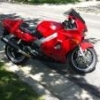-
Posts
642 -
Joined
-
Last visited
-
Days Won
6
MadScientist last won the day on January 18 2019
MadScientist had the most liked content!


MadScientist replied to weee06's topic in Eighth Generation VFR's

MadScientist replied to SportTouringCZ's topic in Fifth Generation VFR's

MadScientist replied to paulmeisterpk's topic in OTHER Motorcycle Talk (non vfr)

MadScientist replied to sfdownhill's topic in Exhaust Systems

MadScientist replied to paulmeisterpk's topic in OTHER Motorcycle Talk (non vfr)

MadScientist replied to sfdownhill's topic in Exhaust Systems

MadScientist replied to sfdownhill's topic in Exhaust Systems

MadScientist replied to sfdownhill's topic in Exhaust Systems

MadScientist replied to SweViffer's topic in Sixth Generation VFR's
By using this site, you agree to our Privacy Policy.